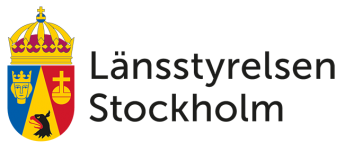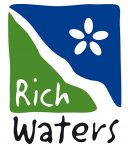Introduction
This is a summary of the Handbook for strategic municipal water management, developed within LIFE IP Rich Waters. It provides an overview of the various steps in the work method described in the handbook.
Handbook for strategic municipal water management – a summary in English (pdf)
About the Handbook
The handbook includes the best available knowledge about municipal water management and is based on experiences and lessons from various municipalities. It provides a general description with recommendations for how a municipality can work with water issues. The approach is described from a process perspective with examples of issues that are important to consider. The work approach and orientation should be adapted to each municipality’s conditions. The handbook should therefore be used as inspiration and as a support tool for creating an individual work model for water management on the scale that suits the municipality.
The handbook has been drafted within the LIFE IP Rich Waters project by the County Administrative Board of Stockholm. The handbook was published online in December 2018 and is published in Swedish:
Handbook for strategic municipal water management (in Swedish)
The handbook has also been published as a web tool here at www.vattenplanering.se in January 2020. Here you can find different tools and inspiration about strategic water planning.
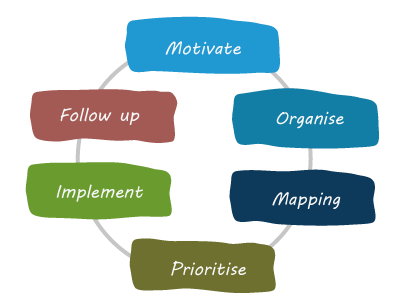
About strategic water management
Strategic water management is a coordinated work approach. The municipality, with its companies, has authority over supervision, approval issuance, urban planning, water and wastewater management, and drinking water production. As property owner and practitioner, the municipality has responsibility for a range of different water management issues. The municipality’s numerous roles and responsibilities involve both challenges and opportunities.
Working strategically and with a coordinated approach to water management establishes better conditions for efficient resource management. Water management takes place by means of coordination within the municipality and in cooperation with other relevant stakeholders. Water management creates ecosystem services, is a benefit to outdoor recreational life, prevents flooding and can prevent damage, which otherwise would be much more expensive to rectify than the actual water management itself.
There is a major need for a good planning foundation for the water resources in growing cities. It saves money in the municipality’s urban planning work because it limits investigative costs for each individual detailed plan. Successful water management cannot only be based on compliance with environmental quality standards. The primary driving force must be the desire within the municipality to both utilise and protect the water. Insight into the actual value of various measures and ancillary effects is the key to successful environmental work. When done correctly, water management can be an asset with many different positive synergy effects as a result. Follow-up and evaluation also become valuable parts of the work to ensure that the resulting effect of the planned initiatives meets expectations.
| Key issues for successful water management |
|---|
| • Harmonise water management in terms of the municipality’s ambitions and legal requirements. |
| • Build a robust and broad internal organisation with clear lines of decision-making and sharing of responsibility. |
| • Build a common knowledge base relating to the problems and needs for measures. |
| • Prioritise measures methodically and secure financing and implementation through internal coordination and external collaboration. |
| • Follow up and evaluate water management both organisationally and practically for continued development and effectiveness. |
Step 1: Motivate
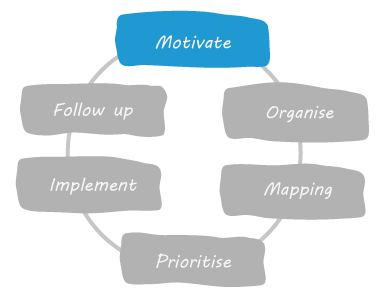
Water resources must be handled like any other planning requirement and natural resource, i.e. partly based on legal requirements. But it is also possible to identify synergy effects in the work from which the municipality can benefit.
Each municipality must find its own motivations over which advantages and benefits are associated when conducting and developing water management work. The political will is an essential factor for how well a municipality succeeds with water management.
In many cases, increasing knowledge is necessary, in order to create a better understanding of water as a resource.
| Three key points |
|---|
| • Find your reason ‘why’ – why water management is important, and which benefits the municipality can achieve with coordinated water management. |
| • Determine who needs to be motivated. Who needs to be motivated in order to proceed? Decision-makers, internal organisation? |
| • Harmonise the municipality’s ambitions with legal requirements. |
Arguments that municipalities have used to develop water management
- Find a more cohesive, resource-efficient and purposeful work approach based on the responsibility that the municipality has for various water management.
- Create a robust organisation for water management in order to provide better conditions to implement measures.
- Create a cohesive approach internally with respect to how the water should be used, developed and protected in order to better manage the risks in a changing climate, protect the drinking water supply and increase the attractive draw of the municipality.
- Create better opportunities to comply with legal requirements. For example, municipalities need to have an offensive community planning process, in particular to prioritise fulfilment of environmental quality standards for water. The county administrative board has an obligation to repeal municipal decisions on detailed urban planning if an environmental quality standard will not be fulfilled as a result of the decision. (cf. chap. 11, sections 10 and 11 of the Swedish Planning and Building Act).
- Establish a work approach that promotes synergy effects.
- Create a better foundation for operations planning, activity planning and budget work.
- Develop knowledge relating to water management among citizens as well as internally within the municipality in order to decrease the negative effects on water and increase understanding for different areas of work.
Step 2: Organise
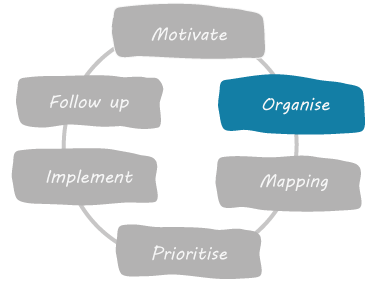
An important factor for success in water management in a municipality is to establish a robust organisation in which every participant’s responsibility is defined. The political anchoring is central, together with creating a cross-disciplinary administrative organisation for a coordinated approach to water management. This will eliminate many discussions in subsequent phases when operative measures are implemented.
Since water does not follow administrative boundaries, it is also important to develop collaboration with external stakeholders of the water basin perspective.
Internal coordination for water management
The municipal council has an overall responsibility for the strategic work, which naturally includes water management. A robust internal organisation is needed for effective water management. An example is given below. There are advantages in creating a strategic water group that makes decisions and controls the municipality’s water management. This group could include, for example, trustees, administrative managers or other official positions with a decision-making mandate. Moreover, one or multiple groups of professionals with inter-administrative representation are needed. These groups are staffed by units that work with water management. The group prepares decision-making support
based on their expertise and implements the water management that has been decided upon in the strategic group. The planned initiatives must be described in the activity planning. Ultimately, it can be beneficial to have a designated person in charge of coordinating the internal water management, a water coordinator who plan and do follow up on the work, reporting to the strategic group, and serve as the municipality’s contact person for water management in relation to external parties.
It is important to have an order of delegation that clearly describes the various groups and roles of the functions, regardless of the organisation that the municipality chooses.
Collaboration with parties outside of the municipality
External collaboration in this context refers to stakeholders that are not part of the municipal administration but have an influence on the water environments or are affected by the municipality’s water management. There are numerous benefits in collaboration with various parties within the water basin area, including simpler decision-making channels, if the collaboration is formalised and coordinated initiatives on measures that benefit more than one party. Common applications for external funding for measures in the water basin can also be facilitated.
Collaboration takes time. Therefore, you should first identify which target groups you need to reach in the water basin, what issues need to be stressed and what additional value collaboration can provide. Find out about existing links and collaborations. The various stakeholders will also have different conditions for cooperation and collaboration, which must be discussed at an early stage. For smaller municipalities with fewer resources, collaboration with other municipalities may be key to success with water management. There are many benefits of collaborating with joint planning, shared benefits for water coordinators or project managers, shared financing and common prioritisation with respect to implementation of measures, particularly from the perspective of a water basin.
| Three key points |
|---|
| • Create a robust internal organisation with broad representation from various parts of the municipality. |
| • Decide on an order of delegation that describes roles and responsibilities. |
| • Collaborate with external stakeholders for increased knowledge and initiatives that use resources more efficiently, e.g. joint planning, shared job positions like project managers or water coordinators, financing, prioritisation and implementation of measures. |
Step 3: Mapping
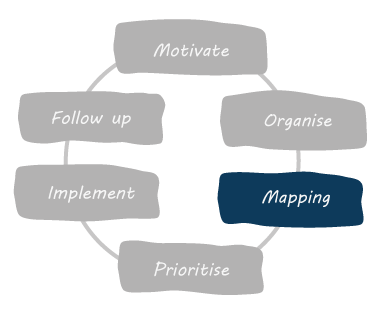
A knowledge basis is required to establish a good picture of the status of the environment and analyse the challenges facing the municipality. Based on the results, an assessment takes place to determine which measures should be prioritised.
Which type of supporting material that should be gathered depends on the purpose for which it is collected. Various types of documentation and information are gathered internally and externally.
The results from the mapping can also be used in later stages as a basis for implementation of measures or in the procurement of services. There may also be reason to revisit this stage in order to complete the analysis, or if the purpose of the water management process changes. Do not forget to determine how the collected material should be managed and stored so that it remains accessible later.
| Three key points |
|---|
| • Build a common knowledge base relating to the problems and needs for measures. |
| • Determine which material is necessary and adequate to be able to decide on further work. |
| • Consider how the results from the gathering of information should be stored and managed. It will very likely be useful in other assignments and projects. |
Step 4: Prioritise
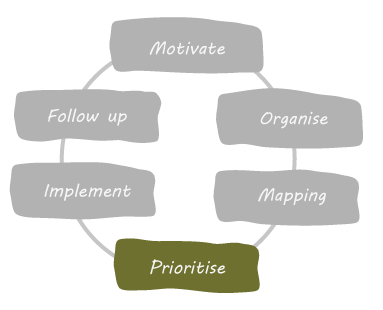
A prioritisation process is needed to identify key issues, particularly since there are seldom economic or human resources available to implement all measures proposed as a result of the information gathering process. The municipality thus needs to prioritise internally and sometimes in the external collaboration within the water basin. Various time requirements must be observed. In 2021/2027, our waters must achieve good water status and we can expect effects on society and the environment in a changing climate adding to the challenges.
By structuring the water management, opportunities to implement the correct measures at the right time are increased, which can save resources and provide a better end result. In most cases, however, there is a delay in measurable effects in natural environments after implementation of physical measures.
Measures can be implemented while the long-term and strategic planning or prioritisation work proceed, if there are means and opportunity. Sometimes, it may even be necessary to work in both ends, particularly in municipalities with high ground exploitation pressure.
There are different methods and models to help prioritise. Often, these are best when combined. The purpose determines which methods and models are most suitable.
| Three key points |
|---|
| • Prioritise methodically! The need for measures often exceeds the budget and therefore the initiatives must be prioritised. Find a method that suits your purpose. |
| • Use the mateiral from step 3 – Mapping – to arrive at a fact-based decision. |
| • Involve your stakeholders and start from a water basin perspective. The work benefits from prioritising together or in consultation with those who are affected by the measures. |
Step 5: Implement
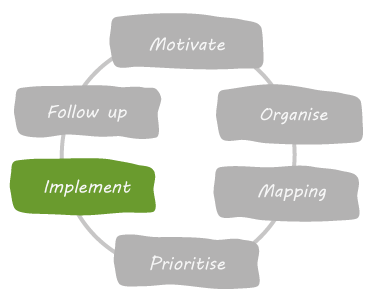
The implementation is a process in and of itself and it must also be planned and documented. With thorough preparatory work, the implementation phase is simplified.
Measures can be divided into administrative, preparatory and physical measures.
Administrative measures are the development of for example plans and programmes for water. Water documents should be steering document for how the municipality will work with water management. They include descriptions of objectives, sharing of responsibility and various types of measures that are required to achieve goals and to facilitate and evaluate the work.
Preparatory measures include for example the establishment of knowledge basis, which is required to analyse the status of the environment and the challenges facing the municipality.
Physical measures are the concrete work, such as establishing wetlands, removing migration barriers or building dams. Good project planning is important, particularly if several stakeholders are involved. Do not forget to document and follow up in order to develop the work process.
| Three key points |
|---|
| • The implemenation work is a process in of itself. Document in order to develop the work approach and to facilitate learning. |
| • Secure implementation and financing by planning and coordinating internally and collaborating and cooperating externally. |
| • Communicate and solidify the result for a harmonised view on the implementation. |
Step 6: Follow up
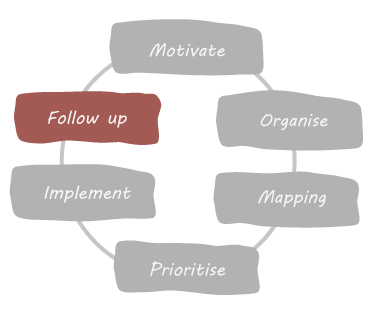
The work with water management requires regular follow-up and evaluation, so that the right initiatives are prioritised based on both short-term and long-term needs and that the work provides the results that are desired. Follow-up and evaluation are valuable for developing work procedures, improving efficient use of resources and avoiding pitfalls in future work. Follow-up of water management should take place in connection to the municipality’s general evaluation and follow up.
In most cases, there is a delay before measurable effects in the environment after implementation of physical measures, so the follow-up can not only be done immediately after implementation.
Evaluation creates a basis for following up on the effects of what was planned, in order to develop the work approach and improve the result. Was the intended result achieved? What worked well? What worked less well? The evaluation can be carried out at any point in time when there is a need to know how the work functioned. Do not forget to communicate the results from the follow-up and evaluation with relevant stakeholders.
| Three key points |
|---|
| • Follow up evaluate on the water management both. |
| • Follow up on the water management in connection with the munipality’s other follow-up. |
| • Communicate and solidify the result from the follow-up and evaluation with concerned stakeholders. |
To start from the beginning
These sections are designated for municipalities that are without a dedicated staff that can coordinate water issues and therefore are short of time, for reading as well as practising this handbook. It is in this kind of situation that these sections might come in handy. To work through this simplified work process is estimated to demand as little as 120-240 working hours for coordination, perhaps distributed over one year. After doing so you should have a description of your working methods concerning water management, a rough picture of your water status and the most prioritised needs for action in your municipality.
The longer version has more support in terms of examples and templates. This text is mainly meant to understand the work process so that you can see if it is something for you to take on.
Start up for Motivate and Organise
Water related staff and actions
Make a survey of what officers in your municipality that work with water issues in some part of their duty. This is important because it will render a group to discuss water issues with. Some examples of roles relevant for water that are common within Swedish municipalities are:
- Supervision and permit authority
- City planning
- Water and sewage works
- Drinking water producer
- Land and real estate owner
When the water related staff have been identified it is time for overview and consensus of your situation. This is best compiled in a simple report based on some questions concerning their role, conditions of work and historic actions. It can be done through common meetings, one on one, or in writing. The purpose is to find out what have been done so far, and which shortcomings that can be identified. It is important to document the progress if the work for some reason should come to a halt or if there is a change of personnel.
Start up for Mapping water status
Compile facts on water status
The next step is to compile facts about the water bodies in your municipality. The purpose is to describe the main concerns of your waters for the politicians. It is an important part of upcoming decisions.
Integrate water status into your planning documents
With limited resources it is important to integrate water management into those processes that you are already working with. In such an integration process the question at hand is: in what way and to what extent do these processes impact water quality? There are three areas where Swedish municipalities in most cases have a decently up to date plan; supervision plan, comprehensive plan, and plan for water and sewage. There should also be a water resources plan and more generally a structure for cooperation between municipalities in relevant water issues within the same catchment.
Start up for Prioritise and Implement
Political level of ambition
The reason that these start up sections do not begin with the political assignment, as in the rest of the handbook, is because the awareness and knowledge is often missing in the targeted municipalities. Annex U2 contains questions that are suitable for municipal politicians to ponder before taking a stand on what level of ambition your municipality should have.
With regard to action 1 for municipalities in the River basement management plan of the Northern Baltic Sea that we somewhat simplified calls ‘to have a comprehensive administrative plan for water’, as well as capturing the opportunities as a land and real estate owner, the handbook gives three alternative levels of ambition to decide on.
Alternative 1 – work order. The simplest way to an acceptable structure for your water administration is a work order that describes ’who does what’. As it first and foremost describes how different departments organise their work and responsibilities, rather than targets and means, it may probably be possible to adopt by a higher official. On the other hand a work order still means that more time will be assigned to water issues than earlier and is the financing of that work something that you want to be a political standpoint or will you handle it within the given budget for each board?
Alternative 2 – principal standpoints. A somewhat higher ambition is set through principal standpoints within a politically adopted document. It may be in the form of a water chapter within a sustainability program, environmental program, nature action plan or a comprehensive plan of city planning. A drawback with this alternative is that it may be a long time left until the document at hand will be revised. Another option is a specific water document such as Water and sewage plan which can include storm water and is a demand for municipalities in the River basement management plan and where one purpose is to follow the environmental quality standards.
Alternative 3 – separate overall document. The most elaborate engagement is to go for a detailed overall action plan with targets and actions, for example a water action plan. A process to put forward such a document is described in the handbook annex 4. A template for disposition of such a plan is proposed in annex 5. Examples of actions to include in such a plan are listed in annex 3. Further support for the process to reach a decision on the level of ambition is given through annex U3.
Start up for Follow up
The last step is initiated when your document for water management has been adopted. Now it is important to fulfil what you have outlined. Regardless of what alternative you have chosen for your water management the handbook suggests a couple of questions to use annually to give a sound follow up. Be certain to document these as well as it may be fruitful to return to if needed.

